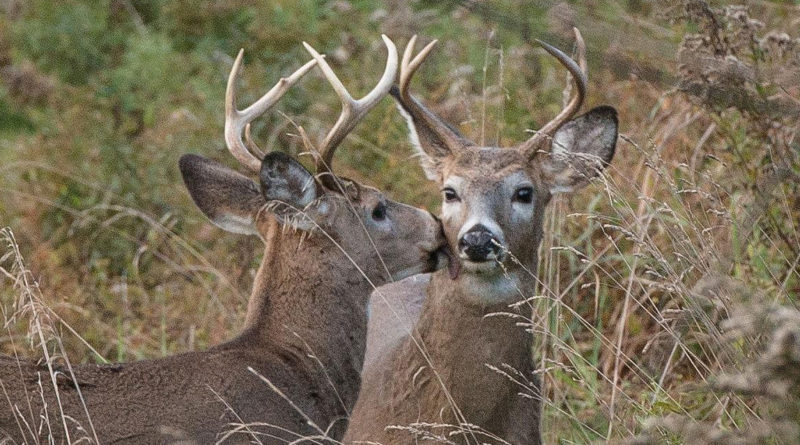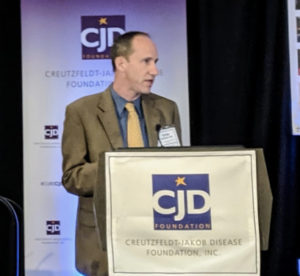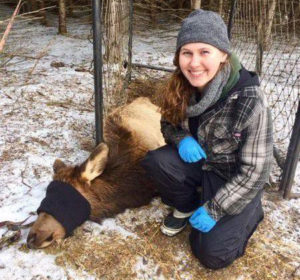State of Chronic Wasting in Pennsylvania: Separating fact and fiction
In confronting the newest — and perhaps scariest — threat to the state’s deer herd and hunting in general, the game commission has seemingly borrowed a page from Smokey the Bear’s playbook.
Only we can prevent Chronic Wasting Disease (CWD).
“This is something we need help with,” said Courtney Colley, Pennsylvania Game Commission CWD communications specialist. “This is the responsibility of everyone. Each person can play a part to address the disease — something we collectively have to work on.”
The most recent confirmed case of CWD in the wild deer population was recently found in Juniata County’s Greenwood Township, leading to a 2,000-square mile extension of the state’s Deer Management Area (DMA), including everything south of Route 522 in Snyder County.
CWD is a prion disease, one caused by misfolded proteins similar to Mad Cow Disease in bovine and Cruetzfeldt-Jakob Disease (CJD) in humans. It attacks the brain of any deer, elk or other cervid, causing mental and physical deterioration and eventually death. There is no known cure, and the disease has slangily been referred to as “Zombie Deer Disease,” due to its zombie-like effect on the deer’s demeanor before death.
While there are no known cases of CWD transferring to humans, there is concern it could, as Mad Cow Disease did in a variant phase of CJD that has since killed 220.
There are more questions than answers when it comes to CWD’s potential impact on the region, on hunting state-wide and even potential human crossover. In an effort to clear up some of the mysteries, the following stories look deeper into the CWD issue factoring in feedback from several national voices on the subject:
CDC expert shares CWD concerns
According to Dr. Ryan Maddox, of the Centers for Disease Control, there are three main reasons we should be concerned about Chronic Wasting Disease (CWD) in terms of being a threat to humans.
“There is history of a prion disease already crossing species from animals to humans in terms of bovine spongiform encephalitis (Mad Cow Disease) to the variant Creutzfeldt-Jakob Disease (CJD),” he said. “CWD is different than mad cow, and there are no current cases on record where a human has contracted CWD, but there is still concern based on the history.”
Another reason for concern, he added, was the increasing spread of CWD.
“The concentrations of deer and elk throughout the country is expanding and we have seen an influx of new cases of CWD in different regions,” he said. “There is an increasing proximity of humans and the deer population.”
Thirdly, he referenced a currently unpublished scientific study by Canadian researcher Stefanie Czub in which macaque monkeys contracted CWD after consuming meat from infected deer.
“Macaques are primates with genetic makeup similar to humans, which makes this study and others like it very interesting,” Maddox said. “There was another study done around the same time by the Institute of Health in which the disease did not transfer. It would be interesting to see the original study in more detail and how it was conducted.”
Some of that discrepancy may have to do with an ever-evolving series of new strains of CWD, according to Debbie Yobs, president of the CJD Foundation.
“I’m not a scientist, but I do sit in tons of prion-based lectures and there is quite a lot of discussion about new strains of CWD popping up in different places and that could be why they find one thing in one study, and something else entirely in another,” she said. “There has been talk of brain matter collected from an infected deer in Texas and that from a deer in other areas, like Colorado, being different and that shows that this disease is evolving in different strains. How long until a strain develops that is more easily transferable to humans?”
Yet another concern about CWD and its potential health effect is how it transfers so much easier than Mad Cow Disease.
“CWD transfers fairly easily from deer to deer,” said Maddox. “We didn’t see that with Mad Cow, which seemed to be connected to the food the cattle were eating. CWD seems to be much more easy to spread via bodily fluids and environmental factors.”
The final concerning factor about CWD, as with other prion diseases, is dormancy.
“Variant CJD has been known to lie dormant for decades in humans,” Yobs said. “What if CWD follows a similar pattern?”
According to Nick Pinizzotto, president of National Deer Alliance, deer could carry CWD up to two years without showing symptoms, which is why he advocates testing of deer harvested during hunting. However, he urged caution in worrying too much about deer-human CWD crossover.
“CWD has been on the landscape for decades, and considering the number of hunters across the country, there has likely been thousands of people who have inadvertently consumed meat from a deer that had CWD,” he said. “And yet, there is no reported case of CWD in humans.”
Herd reduction part of PGC gameplan
With Chronic Wasting Disease knocking on the Valley’s doorway, state game commission CWD communications specialist Courtney Colley said that it is time to switch gears from passive management to active.
“Passive management is what we’ve been doing. It involves surveillance, monitoring, collecting hunter and roadkill samples and waiting. Obviously, that isn’t working,” she said. “We need to do what we can to eliminate CWD before it proliferates the landscape. That isn’t always accepted well by the public, but it is shown to work in other parts of the country.”
The game commission has begun studying the deer herd throughout the region, including via infared cameras along fields at night.
Once data is collected on how big the local herd has become, extra Deer Management Area (DMA) permits will be allocated for the local DMA area, and an extensive herd reduction will likely take place.
“We will be increasing hunter harvest opportunities throughout the upcoming deer seasons as part of that active management. This is where our hunters come into play in helping the situation,” said Colley. “It will mean that the hunting won’t be as good for a couple of years, but we have to look at the long run versus short run. We want a healthy deer population 50 years from now.”
According to Nick Pinizzotto, president of the National Deer Alliance, consistent herd reduction is the one tool that he’s seen work in terms of slowing down the prevalence of CWD.
“Illinois has seen a lot of success because they are keeping deer herds thin. Hunters are taking more deer, and where needed, professionals are brought in to augment that reduction,” he said. “It doesn’t sit well with hunters to hear that — no one wants to bring in the USDA (United State Department of Agriculture) sharpshooters, but the other option is to sit there and do nothing, and that doesn’t work as we’ve seen in other parts of the country.”
According to Colley, Illinois and Wisconsin are used as the benchmarks in CWD deer management. Both had CWD first discovered in the same year (2002). The following year, both implemented programs that increased hunter harvest and supplemented that harvest with “targeted removals.” Wisconsin implemented an especially intense “target removal” program in one of their CWD areas.
“That didn’t go over well with the public, and there was a lot of pushback. Funding was cut and the deer management program was all but disbanded,” said Colley. “As the herd ballooned in numbers, the CWD prevalence level increased dramatically.”
She went on to add that in large areas of Wisconsin, there is a 25 to 30 percent prevalence of CWD in wild deer, “In fact, one study suggests there is a 50 percent prevalence of CWD in adult bucks. That means if you harvest a buck in some areas of Wisconsin, there is a 50-50 chance it has CWD.”
Meanwhile, Illinois continued its hunter harvested and targeted removal program with a specific population goal in mind. Hunters go in first, and sharpshooters are only brought in if hunters don’t reach the population goal.
“In the past 15 years, the CWD prevalence in its deer herds is around two percent,” said Colley. “In my mind, that is a good success story. Illinois and Wisconsin have very similar landscapes and are right across from each other. The only difference was the management they were doing.”
The game commission will announce numbers of additional DMA permits in the near future once herd population studies conclude, and there may be additional opportunity for deer harvest beyond the regularly planned seasons, according to Colley.
“Over the next year, we will be proposing some options to increase hunter opportunity as we work together to keep this disease in check,” she said. “We want to collect public input, we want to create a team effort that makes a real impact. It can’t be the game commission fighting this alone.”
Pinizzotto agreed.
“We don’t have some big breakthrough — it’s not like we’re just weeks away from a cure. What I tell people is that we have to get used to this being a forever disease,” he said.
“The ultimate message is to keep hunting. Enjoy the activity you love. Hunters have been the answer to many wildlife issues in our country, and I think hunters are the answer to this situation, too.”



